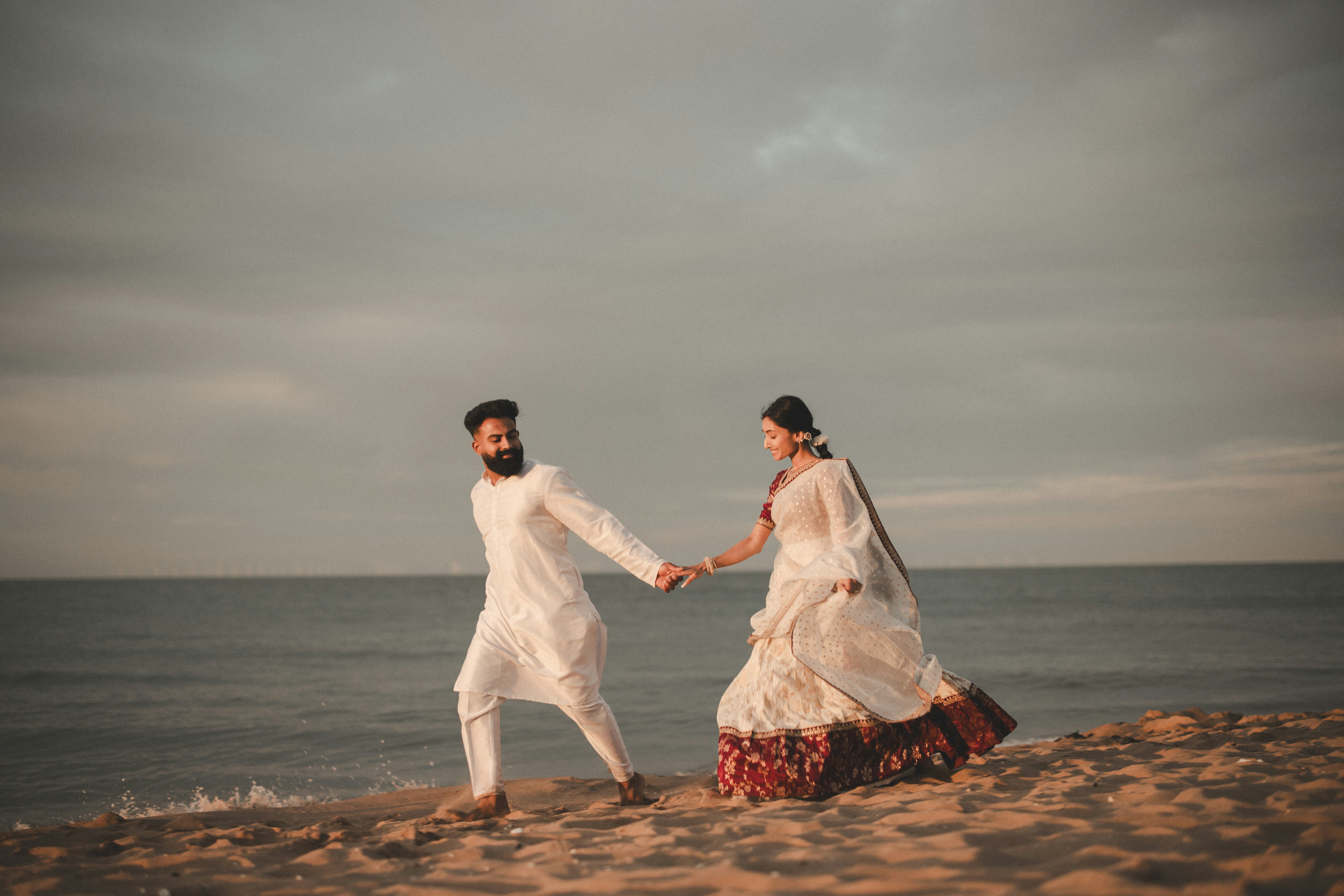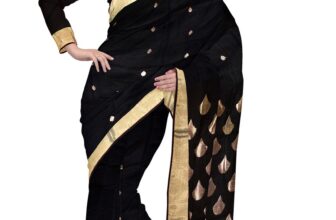Introduction: Exploring the Splendor of 10 Types of Wedding Silk Sarees
Wedding silk sarees hold a special place in Indian bridal fashion, symbolizing elegance, tradition, and timeless beauty. With their luxurious fabrics, intricate designs, and vibrant colors, silk sarees are a favorite choice for brides across the country.
In the realm of Indian bridal fashion, silk sarees hold a cherished place, embodying a timeless blend of elegance, tradition, and opulence. Each region of India boasts its unique variety of silk sarees, adorned with intricate designs, vibrant hues, and luxurious fabrics, making them a symbol of grace and sophistication. In this comprehensive guide, we embark on a journey through the captivating world of 10 distinct types of wedding silk sarees, delving into their origins, intricate craftsmanship, and the cultural heritage they represent. From the regal allure of Kanjivaram to the artistic finesse of Patola, join us as we explore the richness and diversity of these exquisite silk sarees, each encapsulating a unique charm that continues to enamor brides across the country.
1. Kanjivaram Silk Saree: The Epitome of South Indian Splendor

Originating from the town of Kanchipuram in Tamil Nadu, the Kanjivaram silk saree is renowned for its rich silk fabric and intricate zari work. The bold and vibrant colors, along with the exquisite motifs, make it a top choice for South Indian brides. Kanjivaram sarees radiate regal charm, adding a touch of traditional grandeur to the bridal ensemble.
2. Banarasi Silk Saree: A Timeless Legacy from Varanasi

Hailing from the spiritual city of Varanasi, Banarasi silk sarees are the epitome of opulence and craftsmanship. Adorned with intricate brocade work and delicate embroidery, these sarees showcase the rich cultural heritage of North India. Banarasi silk sarees come in various designs, including floral patterns, peacock motifs, and intricate Mughal-inspired art.
3. Paithani Silk Saree: A Marathi Marvel
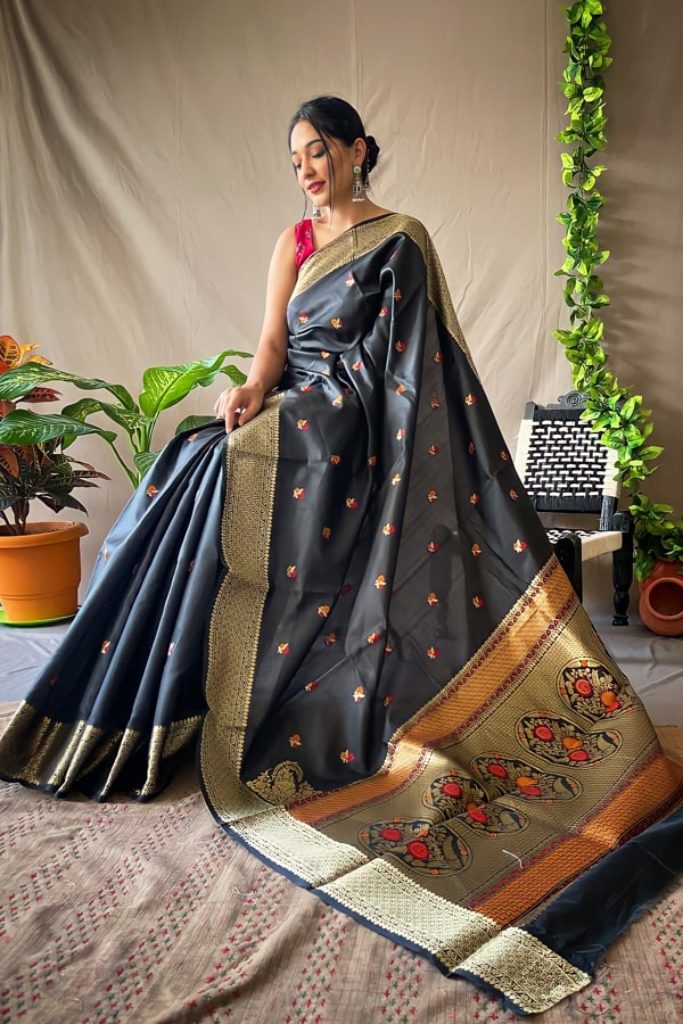
Originating from Maharashtra, Paithani silk sarees are a symbol of Marathi culture and artistry. Known for their exquisite handwoven peacock and lotus motifs, Paithani sarees are usually adorned with rich zari borders. The vibrant colors and intricate designs make them a popular choice for Maharashtrian brides, exuding elegance and grace.
4. Mysore Silk Saree: A Regal Statement from Karnataka
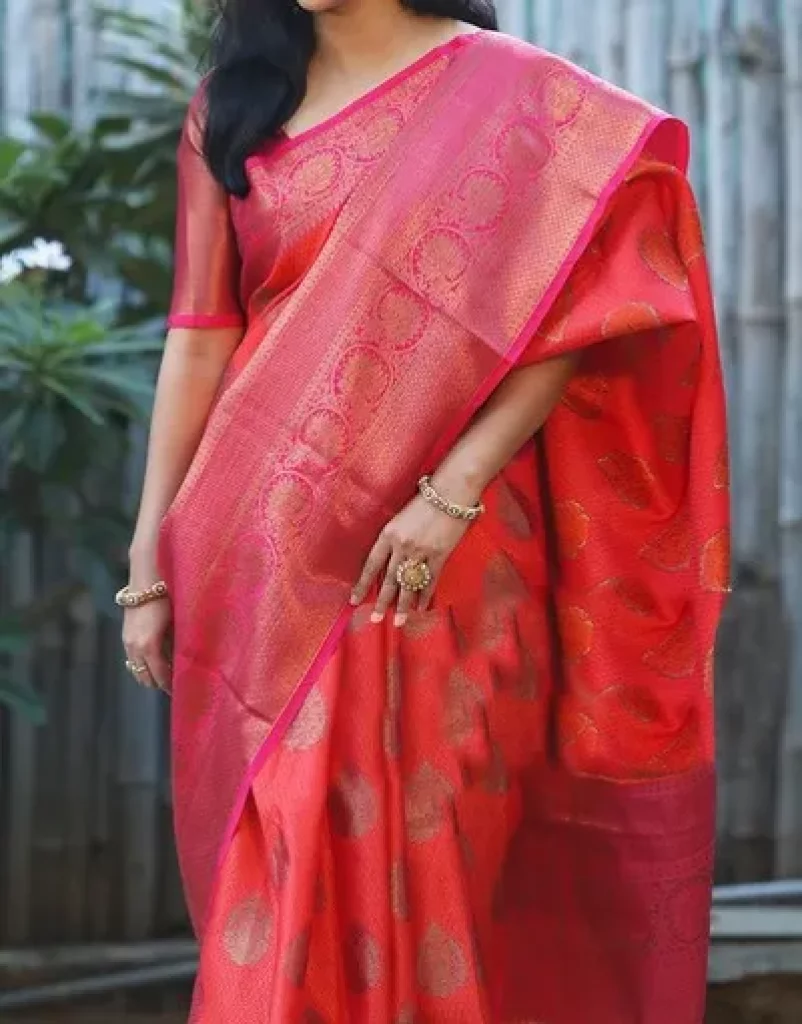
Hailing from the state of Karnataka, Mysore silk sarees are known for their soft and lightweight fabric, making them ideal for draping. They feature a variety of artistic designs, including checks, stripes, and intricate patterns. Mysore silk sarees radiate a sense of understated elegance, making them a classic choice for brides who prefer a refined and sophisticated look.
5. Patola Silk Saree: A Gujarat Masterpiece
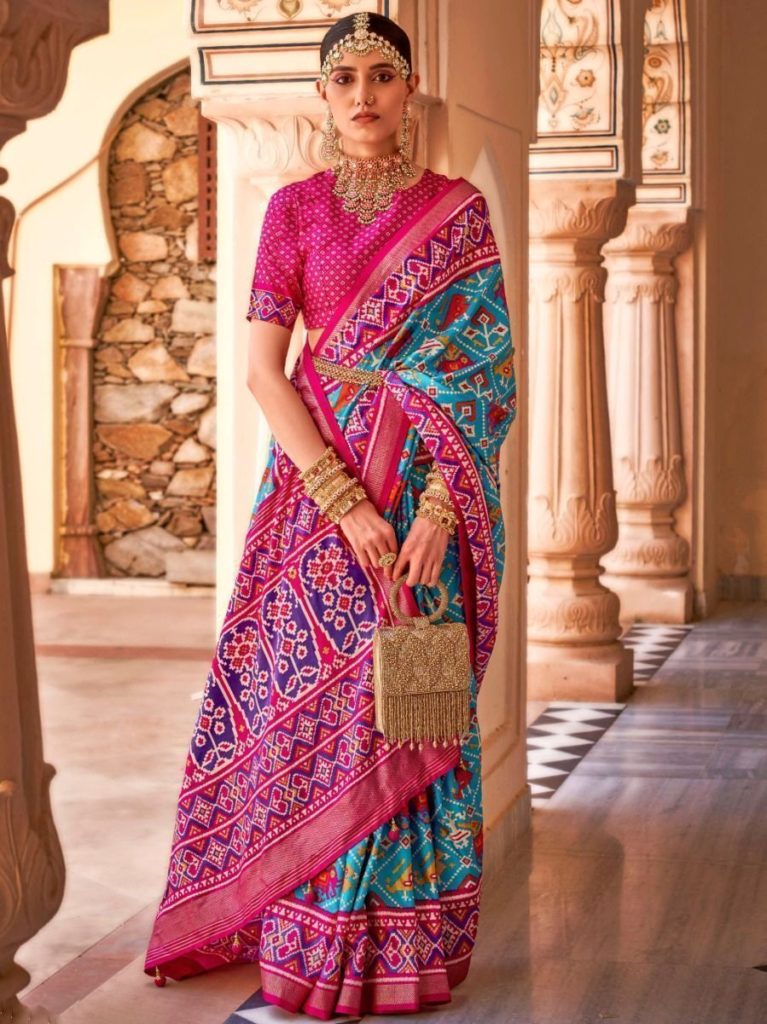
Originating from Patan in Gujarat, Patola silk sarees are a rare and prized possession. Handwoven by skilled artisans, these sarees feature vibrant colors and intricate double ikat patterns. Each Patola saree is a labor of love, taking months to complete, making it a cherished heirloom for generations of brides.
6. Bhagalpuri Silk Saree: The Graceful Charm of Bihar
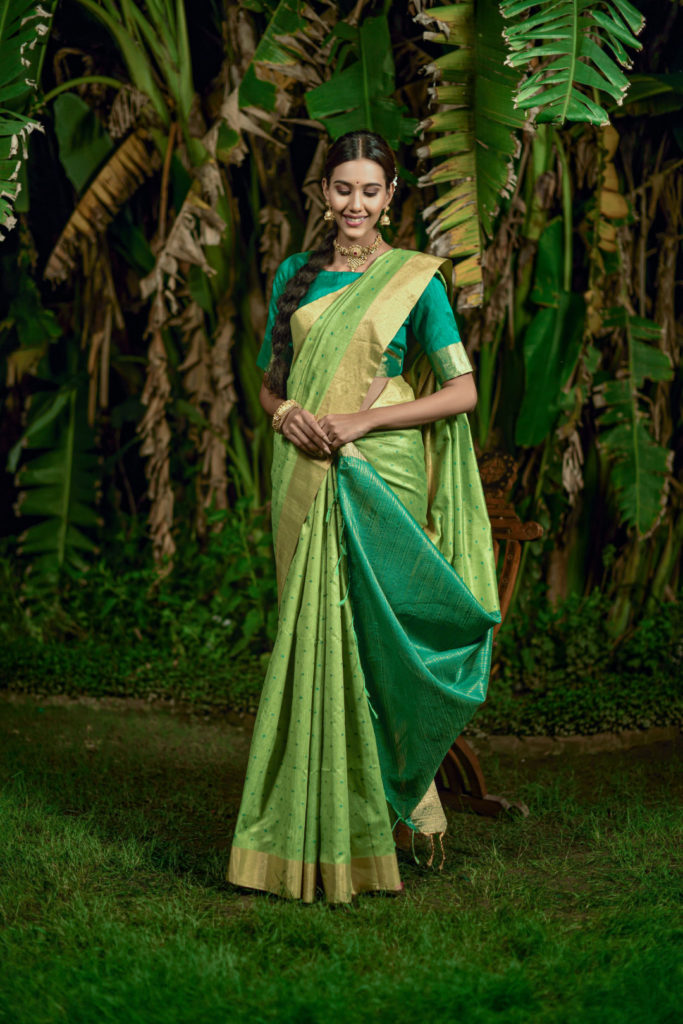
Also known as Tussar silk sarees, Bhagalpuri silk sarees hail from Bihar and are characterized by their unique texture and natural golden hue. The sarees are adorned with elegant designs inspired by nature, reflecting the artistic finesse of Bihar’s craftsmen. Bhagalpuri silk sarees are perfect for brides seeking a blend of rustic charm and sophistication.
7. Dharmavaram Silk Saree: A Touch of Andhra Elegance

Originating from the town of Dharmavaram in Andhra Pradesh, Dharmavaram silk sarees are known for their lustrous fabric and broad contrast borders. These sarees often feature gold or silver zari work, enhancing their regal appeal. Dharmavaram sarees are an excellent choice for brides who wish to embrace the splendor of South Indian traditions.
8. Baluchari Silk Saree: The Artistic Heritage of Bengal

Hailing from the state of West Bengal, Baluchari silk sarees are distinguished by their intricate woven pallu, depicting scenes from epics and mythological tales. The elaborate motifs and artistic craftsmanship make them a statement piece for brides seeking a blend of culture and art in their bridal attire.
9. Assam Silk Saree: A Natural Beauty
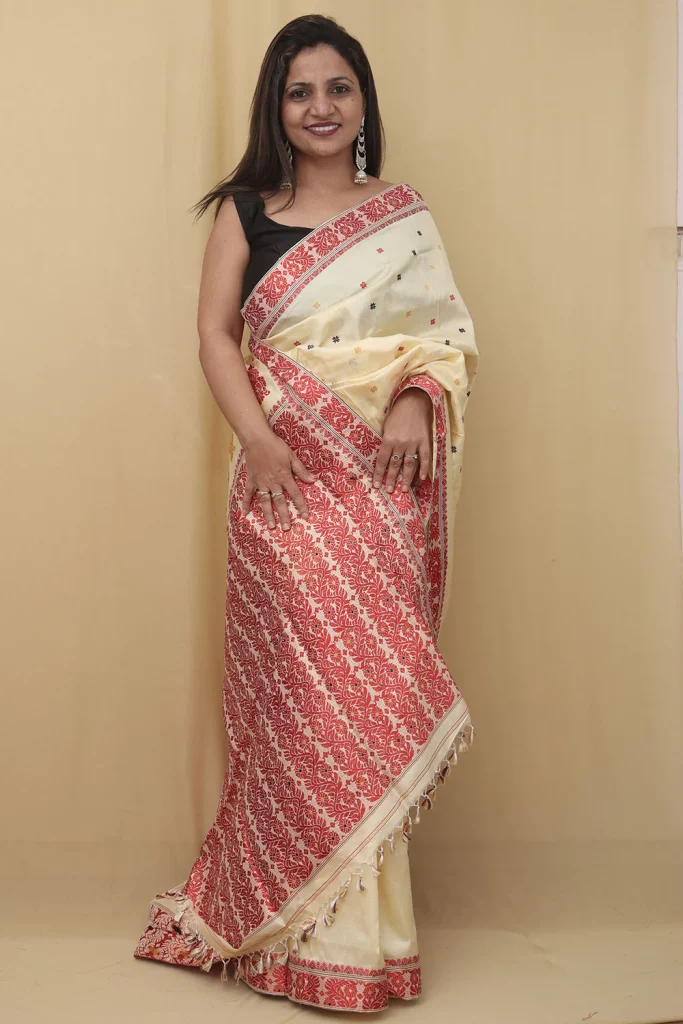
Assam silk sarees, also known as Muga silk sarees and Eri silk sarees, are native to the state of Assam. Muga silk sarees are characterized by their golden sheen, while Eri silk sarees have a soft and warm texture. Both varieties showcase unique and indigenous designs, making them an exceptional choice for brides who appreciate the essence of nature.
10. Chanderi Silk Saree: A Glimpse of Madhya Pradesh’s Grace
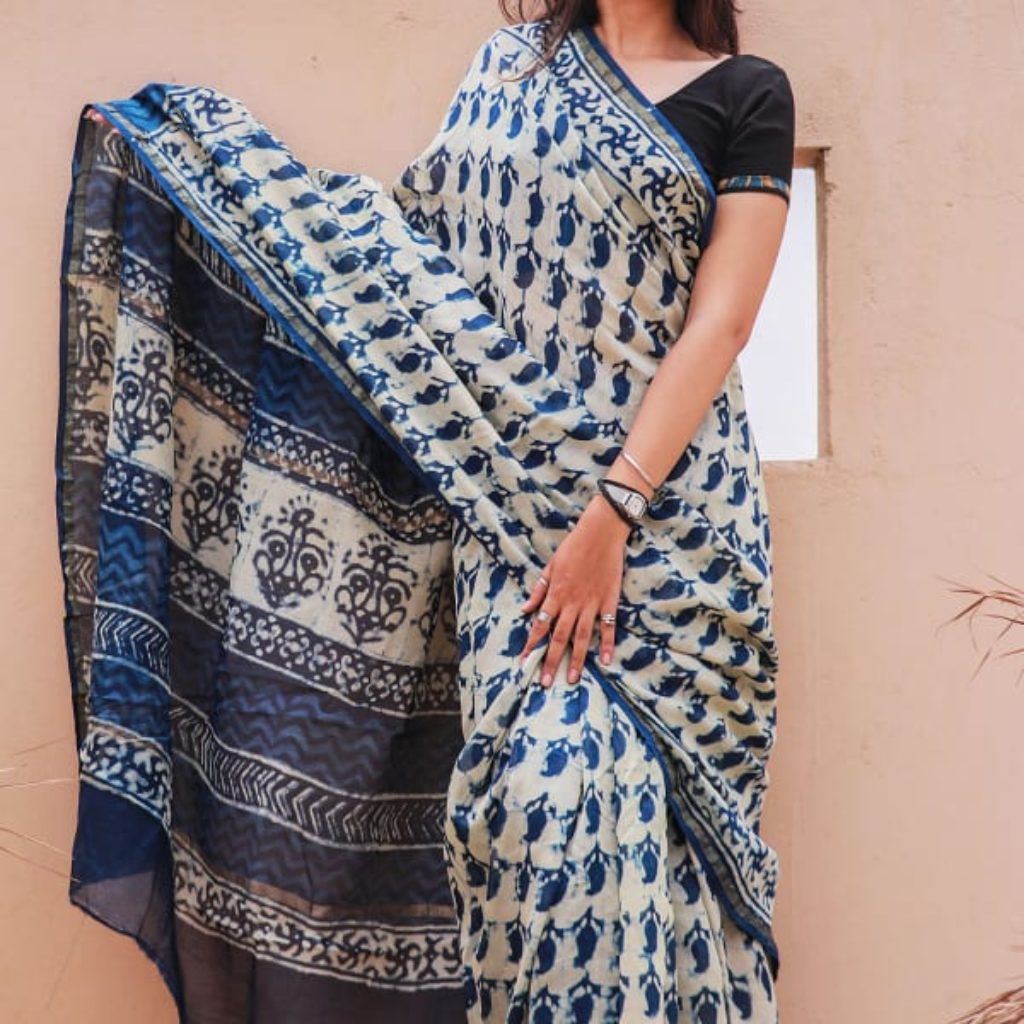
Hailing from the town of Chanderi in Madhya Pradesh, Chanderi silk sarees boast a lightweight and sheer texture, making them ideal for draping. These sarees are embellished with intricate zari work and delicate embroidery, exuding elegance and sophistication. Chanderi silk sarees are a blend of traditional charm and contemporary grace, making them a versatile choice for modern brides.
Conclusion:
In conclusion, the world of wedding silk sarees offers a breathtaking array of choices, each capturing the essence of India’s diverse cultural heritage and artistic craftsmanship. From the regal opulence of Kanjivaram to the timeless elegance of Banarasi, each type of silk saree holds a unique allure that can transform a bride into a vision of grace and beauty on her special day.
The Kanjivaram, with its intricate zari work and vibrant hues, stands as a symbol of South Indian splendor. In contrast, the Banarasi, adorned with exquisite brocade and delicate embroidery, showcases the grandeur of North Indian traditions. The Paithani’s handwoven motifs of peacocks and lotuses capture the essence of Marathi culture, while the Mysore’s lightweight fabric and refined designs exude a sense of understated charm.
Across regions, each silk saree type tells its own story, reflecting the unique artistic heritage of its origin. Whether it’s the rare and prized Patola from Gujarat, the rustic allure of Bhagalpuri from Bihar, or the artistic narrative of Baluchari from Bengal, these sarees serve as cherished heirlooms passed down through generations.
From the natural beauty of Assam silk to the elegance of Chanderi and the sophistication of Dharmavaram, the diversity of silk sarees ensures that every bride finds the perfect match for her personal style and sensibilities.
As brides embark on their journey to find the perfect wedding silk saree, they are not merely choosing an outfit but embracing the rich tapestry of India’s cultural heritage. These sarees, infused with artistry and tradition, encapsulate the grace, beauty, and timeless appeal that make a bride truly radiant on her special day.
Whether it’s a wedding steeped in tradition or one embracing contemporary influences, wedding silk sarees stand as a timeless and exquisite choice that elevates every bride to the realm of elegance and sophistication. As each bride graces her wedding day draped in the allure of a silk saree, she embodies the essence of India’s rich diversity and artistic finesse, leaving an indelible mark on the hearts of all who witness her bridal splendor.



